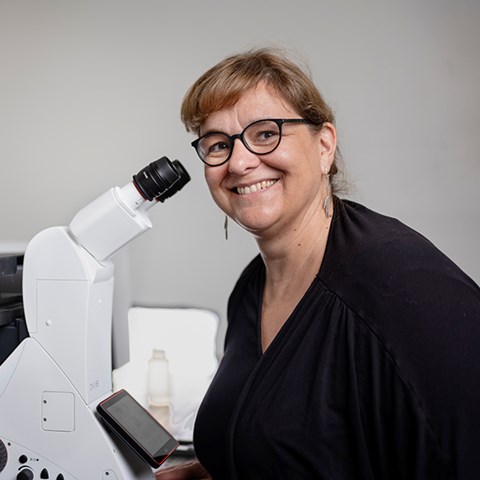Large Wallenberg grant to Stéphanie Robert for studies on how plant cells get their "identity"

Professor Stéphanie Robert of SLU will lead a research project awarded over SEK 32 million by the Knut and Alice Wallenberg Foundation. The aim is to explore how plant cells get their "identity", how different types of cells emerge in the right place and at the right time during plant development. Although carefully studied in animals, this mechanism is still poorly understood in plants.
Knut and Alice Wallenberg Foundation has awarded a total of SEK 700 million to 23 research projects, in medicine, natural science and technology, that are judged to have such a high scientific potential that they have the possibility of leading to future scientific breakthroughs.
One of the awarded projects has the title Decoding cell fate with positional information and is awarded SEK 32,200,000 over five years. The principal investigator is Professor Stéphanie Robert, Professor of Plant Physiology at the Swedish University of Agricultural Sciences (SLU). Co-researchers are her colleagues Peter Marhavý and Stéphane Verger from the Department of Forest Genetics and Plant Physiology, which is part of Umeå Plant Science Centre, and also Eleni Stavrinidou from Linköping University and Maria Tenje from Uppsala University.
How do different cell types emerge at the right time and place in plants?
Animals and plants grow and develop as a result of controlled cellular processes such as division, elongation, and differentiation, where cell differentiation is defined as the acquisition of identity for a specific cell. Although carefully studied in animals, this mechanism is still poorly understood in plants. While a number of genes are known to control the acquisition of identity in plants, we still do not know how these genes are activated.
Positional information is regarded to be a crucial component of this regulatory process: we know that cell identity or cell fate acquisition is dependent on a cell's relative position within the complex organism. However, it remains unknown which signals govern cell destiny determination and how.
The goal of the project that Stéphanie Robert will lead is to contribute to the basic understanding of cell identity determination processes by working on root hair cells in the outer cell layer of the root. Root hairs are epidermal outgrowths present along the root and help the plant to absorb nutrients and water. The researchers will identify the components of positional information and unravel how they transform cell identity in epidermal root hair and non-hair cells.
“Non-hair cells alternate with hair cells along the root and their position in relation to the cell layer below is very predictable, giving us the fantastic opportunity to study cell identity determination”, says Stéphanie Robert. “Better knowledge about these particular cells is very important, and can in the long run help us develop more tolerant crops and trees that can cope with climate change”.
The hypothesis of the project is that positional information not only consists of chemical signals, but also of physical signals such as geometric, mechanical and electrical contacts between cells. To investigate this, the researchers will follow the development of identity when cells are exposed to different stimuli. By systematically changing various physical parameters in root tissue samples from the model plant Arabidopsis thaliana, they will be able to rule out or confirm that these control the cells' properties and development, both individually and in unison.
In addition, the researchers plan to develop for the first time an artificial model of an Arabidopsis thaliana root – a “plant-on-chip” – inspired by a new method where models of human organs are assembled and studied on a microchip.
“Such a method, where plant cells are positioned in specific structures on a surface using advanced micro-manufacturing methods and bioprinting, will revolutionise plant biology. It will enable us to combine genetically modified cells and thereby elucidate how physical stimuli are translated into molecular changes and how these together control the development of different cell types”, says Stéphanie Robert.
Behind this project is an interdisciplinary research group with experts in plant biology, genetics, microfluidics and electronics, who, through their location at three universities in Sweden, have access to the state-of-the-art facilities and instruments that are required to achieve the objective.
“Our project will give us basic knowledge about how cells, both in plants and in other organisms, obtain their identity. This is one of the most central questions in developmental biology that has not yet been answered”, summarises Stéphanie Robert.
Link to press release from KAW.
Contact person
Stéphanie Robert, Professor
Swedish University of Agricultural Sciences/
Umeå Plant Science Center
Department of Forest Genetics and Plant Physiology
stephanie.robert@slu.se, +46 (0)907868609
https://www.slu.se/en/ew-cv/stephanie-robert/
http://www.upsc.se/stephanie_robert
http://srobertgroup.com/
Press image
(May be published without charge in articles about this press release, please acknowledge the photographer).
Stéphanie Robert. Photo: Erik Abel